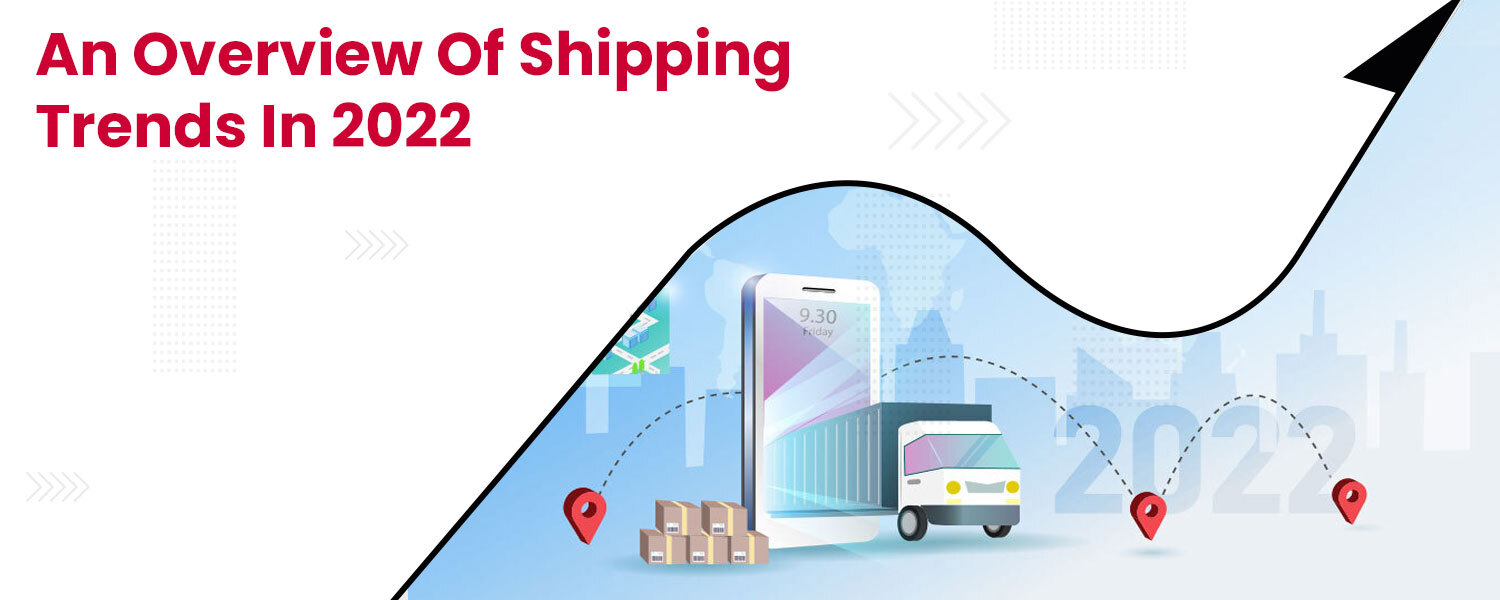Surviving in the supply chain world is considered a success by many in the eCommerce industry. The supply chain will continue to create challenges for parcel shipping due to an ongoing rise in the eCommerce sector. While consumers now buy more products online than ever before, the return rate is also high. All this chaos leads to high shipping costs which further results in eCommerce merchants looking for suitable shipping carriers. While 2021 was a tough year for the shipping industry, let’s have a look at the shipping trends for this year.
Shipping Trends in 2022
Free shipping influences around 80% of people to buy products online. With that information in hand, we are shedding some light on the shipping trends for 2022. So, fasten your seat belts as we are here to state the most expected logistics trends.
Eco-friendly Mindset
It has not been long since businesses began shifting to eco-friendly practices. So, we can expect a hike in this trend. Research indicates that 70% of consumers look forward to green and clean packaging and shipping. Going eco-friendly has swiftly shifted to the center of every business. Unlike earlier, customers are now more concerned about the environment. They are all in for eco-friendly and sustainable packaging and shipping ways.
There has been a major change in the mindset of people eyeing the hazardous aspects of plastic shipping. Supply chains are known to create 90% of the industry’s ecological footprint. Consumers look forward to brands aligning with their beliefs. Hence, businesses that care for such demands and ideologies will have a smooth path to lead the shipping trends in 2022.
Negotiations on a Contract
Many carriers attempt to sign longer deals during the upcoming contract season. It has been done in the past, but in 2022, we will see it become a more widespread practice – particularly among importers – in the hopes of securing space and having peace of mind.
We have seen carriers offer contracts for as long as three years. A one-year contract will start at the highest rate level, a two-year contract will be lower, and a three-year contract will be the lowest. Longer contracts, we feel, are not a smart alternative for importers because rates will be stabilized by the end of next year.
Inventory Management
Managing your inventory is a major concern for various manufacturers. They want to make sure that they have enough stocks in their storage to sustain during high demand. The days when you would order from China and receive the consignment in three weeks or less departed long ago. The current strategy of importers is to order well in advance. Moreover, they are eliminating products that can potentially become exceedingly costly to handle the severe reduction in ocean transportation reliability. This way, they have space for products in demand and would sell better.
Bringing Freight and Other Supply Chain Solutions Under One Roof
Because of the supply chain turmoil that happens frequently, people avoid getting closely in touch with multiple suppliers. The regular importers now like to work with several partners for overseas shipments and drayage from terminals and last-minute shipments. Merchants wish to focus on other major aspects of their business. For this reason, they look for organizations that can provide shipping services under one roof.
In 2022, the globalization of international sourcing, digitalization, sustainability, and administrative participation will become increasingly important as a shipping trend. As oil prices increase and carbon emission targets fall, operators will need to handle the high demands of environmental aspects.
Automation is the New Trend
Logistics inevitably poses to be a labor-intensive industry. This is why it leaves scope for the technical industries to intervene with its efficient innovations. In simple words, we can optimize and automate them in many ways. Processes beginning from picking products off the shelves and doorstep delivery and everything in between can be modified.
Human labor can be cut down to negotiable amounts with the right innovations and technical intervention. Machine-driven logistics has long been the dream of many companies. With new additions to the industry every year, it has indeed escalated. Now machine-driven automation in logistics is not a thing of just top companies.
Logistics companies are growing exponentially with a multitude of options and access to new advancements. Other than automated warehouse maintenance and digitization of product audits, now automation of deliveries may also be possible.
Recruitments Need a Reform
The shortage of drivers has been a major issue in the logistics industry and will also pertain to this year. The logistics sector now has a driver deficit of about 60,000 people, and the number is rapidly increasing. Considering the significance of road transportation in logistics and the larger economy, having enough skilled drivers is critical. Not just the inefficiency of professionals and skilled drivers, the inflation in the economy also leads to restrictions on vehicle purchases.
Bottom Line
There are many trends that we have seen in the year that passed. There will be a plethora of more on their way this year. We have done our part predicting and stating the significant trends and innovations that need to be put in the logistics industry.
If you want to get easy entry into some shipping trends, you may consider signing up with NimbusPost. You’ll be able to ship products promptly while managing and overseeing them under a single platform.




